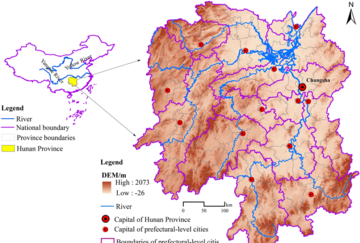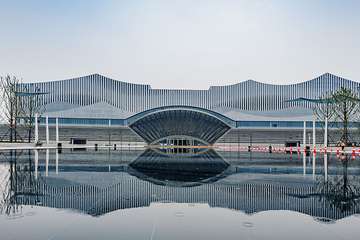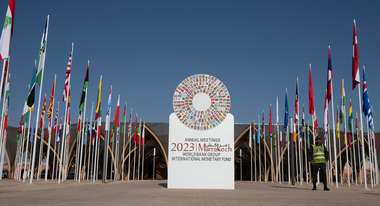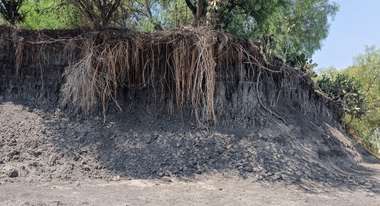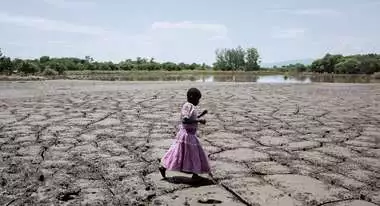China’s “Hunan Model” For Realising China-Africa Food Security
China's agrarian Hunan province is said to be building bridges to help African farmers and fishermen industrialize - but not without self-interest.
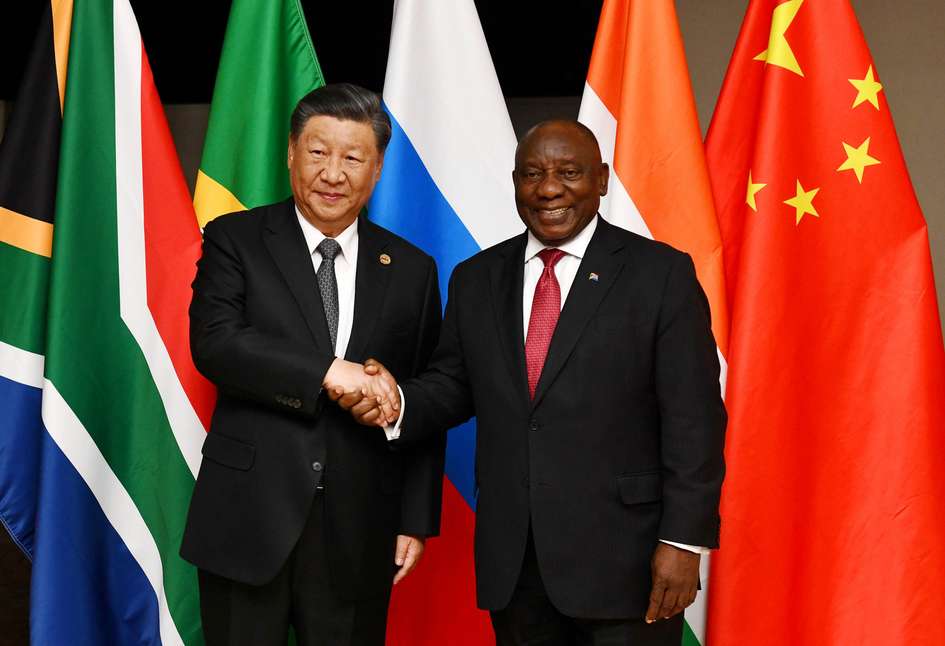
In South Africa in August 2023 Chinese President Xi Jinping launched three initiatives for supporting African development: 1) Support for Africa’s Industrialisation initiative; 2) China Helping Africa’s Agricultural Modernisation Plan; 3) China-Africa Talent Cultivation Cooperation Programme.1 This article draws from a recent South African Institute of International Affairs paper and explores the role of the Chinese province of Hunan to those agendas, the agricultural plan especially.
Agriculture is newly in China-Africa focus, driven especially by a rising new sense of food insecurity in China and a longer standing such circumstance in parts of Africa. In China’s case, trade tensions with major agricultural suppliers the USA and Australia, the disruption caused by COVID-19 and conflict in Ukraine to agricultural supply chains, and the ever more pervasive impacts of climate change, arrive at a time when rising standards of living in China are also leading to higher calorific intake per capita and food standards expectations. China’s current Five-Year Plan (2021–2025), released in March 2021, for the first time ever has a food security agenda on top of rural and agricultural development priorities.2
Hunan Province – China’s Historic Food Bowl
The word ‘Hunan’ translates to ‘south of the lake’ referring to Dongting Lake in Hunan’s northeast that is fed by the Yangtze-bound Xiang River.3 Human activity in the area traces to some 50,000-100,000 years ago, while rice paddy ruins in Daoxian county are dated to 15,000 years ago.4 In the Qing Dynasty (17th to 20th centuries) Hunan’s capital Changsha prospered thanks to its capacity to supply China’s rice and fresh-water fish markets. Alongside Chairman Mao Zedong, one of Hunan’s best-known natives is Yuan Longping, the late agricultural scientist who led China’s hybrid rice green revolution, helping to solve hunger in China.
Around 70 million people live in Hunan, a landlocked economy that is less developed than China’s powerhouse coastal provinces.5 6 The province retains a central role as a food bowl, including production of vegetables, tea, fruit, grains, fish, and pigs, and Chinese Traditional Medicine herbs, and is hub for related industries, including cultivation, harvesting, and processing technologies.7 The province’s exploitable mineral deposits include cadmium, coal, gold, lithium, manganese, tin, uranium, and zinc, and this helps to explain why some of China’s leading electric vehicle and heavy industry manufacturing firms have Hunanese roots.
Specifically, World-class industrial giants with origins and manufacturing and research bases in Hunan include Sany Heavy Industry (China’s leading heavy industry equipment multinational giant), BYD Changsha (a leading Chinese electric vehicle manufacturer), and CRRC Zhuzhou Locomotive Co. Ltd (an electric rail transportation multinational). Hunanese consumer goods companies also already have a presence in Africa, including the parent company of Africa’s largest business-to-consumer e-commerce platform, Killimall, 8 and Jinzai Foods which is building an advanced seafood value-added processing chain in Kenya.
Hunan also has a handful of specialised research clusters, in educational institutions and industry. The National University of Defence Technology, the Central South University (formerly the Central South Institute of Mining and Metallurgy), and comprehensive Xiangtan and Hunan Universities are among them. In industry, Hunan Intelligent Agricultural Machinery Innovation Research and Development Centre was founded in 2021 with a goal to secure grain supply and supply of other key agricultural products and promoting advanced agriculture-related manufacturing. Other industry labs focus on seeds and seed-related innovation and relevant training, and on collecting data and the use of algorithms to support farmer decision-making around breeding, slaughtering, and processing.9 Agricultural experts from the Hunan Academy of Agricultural Sciences have, moreover, been working in various African countries for decades cultivating optimal high-yielding hybrid rice strains and recently also fostering the use of drones and other productivity monitoring technologies.10.11
The “Hunan Model” – A Platform for China’s Three China-Africa Plans
In October 2018, months after US President Donald Trump launched a US-China trade war, and speaking at a China-Africa leaders’ gathering hosted by Beijing, President Xi Jinping proposed a China-Africa economic and trade exhibition.12 13 The following month the United Nation’s Food and Agricultural Organisation (FAO) and China’s Ministry of Agriculture convened a ministerial meeting / summit in Hunan that adopted the “Changsha Declaration” for promoting China–Africa agricultural collaboration.14 In those footsteps, the first China-Africa economic and trade exhibition (CAETE) was held in June 2019 in Changsha, with an agricultural focus. CAETE has been held biennially and mid-year in Changsha since.
In September 2020 Vice-governor of Hunan, Li Dianxun, stated that ‘Hunan is becoming a new window for local economic and trade cooperation with Africa.’15 Amid a bigger domestic agenda for Hunan, in the African context this means supporting acceleration of the African Continental Free Trade Area (AfCFTA) agenda and African development via the following goals: i) create a new window for local cooperation with Africa; ii) focus on key links and explore new paths for sustainable development; iii) expand bilateral trade and build a new platform for business distribution; and iv) deepen interconnection and expand new channels for international logistics. 16 17 18
The province hosts two Africa-related national-level platforms: CAETE and the China–Africa Economic and Trade In-depth Cooperation Pilot Zone. 19 CAETE is a China-Africa marketplace where new business partnerships can be forged with speed and logistical ease. It has a flagship biennial intensive trade-related expo held in the Changsha International Convention and Exhibition Centre, which is supported by a small and permanent trade facilitation exhibition. These activities, moreover, fall within the auspice of the bigger more global-oriented Hunan Free Trade Pilot Zone.
In this way, Hunan has taken the lead role in the promotion and processing of China’s ‘green lanes’ for facilitating African agricultural exports. Thus far, Kenyan, South African and Tanzanian avocadoes, and Beninese pineapples, are among agricultural exports newly approved by China under the ‘green lanes’ trade and development initiative.20 Ultimately China is also working to diversify its sources of agricultural products that have been impacted by recent trade wars, such as soy beans (for example, with Tanzania in focus), and via approving some sea food products from Kenya and other countries, such as lobster, a feature of Australia-China trade tensions. 21 At CAETE of June 2023, a high-level ‘green lanes’ dialogue took place on the sidelines.22
The second national platform, the China-Africa Economic and Trade Deep Cooperation Zone drives Xi’s proposal to ‘establish a long-term mechanism for economic and trade exchanges and cooperation with Africa’.23 The zone’s goal is to overcome bottlenecks in China–Africa economic and trade cooperation in terms of access, finance, logistics, talent, and services.24 To achieve this the Zone’s structure follows a ‘one core, three areas, and five functional clusters’ model (Table 1).25
Table 1: China-Africa Economic and Trade Deep Cooperation Zone
|
Source: Summarised from this source.
Table 1 points to the industrialisation and trade focus of the Hunan Model agenda overall, with machinery, mining, industry, and metals processing all in focus in terms of the five functional clusters. The three areas, meantime, are increasingly connected to river, road, rail, and air freight corridors that are incrementally reducing trade times between central China and the outside world, especially Africa. Finally, the Hunan Model is also fostering cross-border financial, legal, and logistics enterprises, as well as talent promotion, to support deeper production and trade-oriented ties.26 Table 2 lists some selected additional initiatives inside the China-Africa Economic and Trade Deep Cooperation Zone.27.28
Table 2: Selected Supporting Initiatives, China-Africa Pilot Economic Cooperation Zone
1. China-Africa Cross-Border Renminbi Centre:
Twin goals: 1) to foster a form of barter trade where barter compensates for the lack of exchange currency; 2) to foster greater and more commercial use of the RMB in China–Africa economic relations.
2. China-Africa Economic & Trade Cooperation Promotion Innovation Demonstration Park:
Aims to build an African centre for the distribution and processing of products and the flow of people for cooperation with Africa.
3. China-Africa Digital Services Hub:
Aims to support Chinese companies’ trade with Africa’ with focus on cross-border communications & tech support and data-sharing among Chinese companies working in Africa.
4. China-Africa economic and trade think-tanks and research institutes:
Aim to analytically support the data-analytical functions of the Digital Services Hub and undertake research for policymakers and academics, among others, and also encompasses the China–Africa Technology and Trade Measures Research and Evaluation Base.
5. China-Africa Vocational Education Federation:
Talent training; standards building; and capacity improvement via three sub-initiatives: China-Africa joint training of applied talents; China-Africa vocational skill level certification; and African vocational college capacity building.
Source: Abridged from this source.
In sum, in the shadow of some emerging mega trends, including climate change and geo-economic tensions, food security and growth of economic ties between China and Africa are newly important to China. That reality appears to be deeply embodied within a new ‘Hunan Model’ for deepening China-Africa economic relations. Owing to Africa’s relatively untapped human and natural resources these areas are increasingly in focus – and Hunan’s own strengths in these areas bring it to the fore, as a means of fostering Hunan’s and central China’s development, as well as food and economic prosperity for China as a whole.

Dr. Lauren A. Johnston is a Senior Researcher (Consultant), China/Africa, South African Institute of International Affairs, and an Associate Professor, China Studies Centre, University of Sydney. An economist by training, she specialises in China’s economy, with a focus on demographic change also outbound trade and investment, with Africa especially. Johnston was an Overseas Development Institute Fellow in Sierra Leone's Ministry of Planning and Economic Development in the period after the civil war. She holds a PhD in Economics from Peking University, an MSc in Development Economics from SOAS (London) and a BA/BCom (Melbourne).
[1] https://www.mawei.gov.cn/xjwz/zwgk/gzdt/szyw/202309/t20230919_4677230.htm
[2] epaper.chinadaily.com.cn/a/202103/08/WS60456679a31099a23435477d.html
[3] Just as the province to Hunan and Dongting Lake Plain’s north is Hubei province, meaning “north of the lake”.
[4] People’s Republic of China, Hunan Provincial Government, “About Hunan: History of Hunan”, http://www.enghunan.gov.cn/hneng/AboutHunan/HistoryCulture/HistoryHunan/index.html
[5] Yulan Liu et al., “Cooperation Between Hunan and Africa Against the Background of ‘One Belt and One Road’”, Modern Business Magazine, March 16, 2023.
[6] People’s Republic of China, Hunan Provincial Government, 2020 Hunan Fact Book: Geography and Population(Changsha: Provincial Government of Hunan, 2020).
[7] Hong Kong Trade Development Council, “Hunan: Fertile Lands for Agricultural Production”, February 14, 2023.
[8] “Kilimall, Africa's Largest B2C Export Platform: Amazon Cloud Technology Has Helped Me Do E-Commerce in Africa”, LaiTimes, July 4, 2022.
[9] Zoomlion Group, “Hunan Intelligent Agricultural Machinery Innovation R&D Center Established in Zoomlion”, Press Release, June 19, 2021.
[10] People’s Republic of China, Ministry of Foreign Affairs, “The Seeds: The China-Africa Friendship on Madagascar’s New Bank Note”, August 26, 2022.
[11] Yang Kunyi and Feng Qingyin, “China, Africa Sign Rice Industry Initiative”, Global Times, June 28, 2019.
[12] Yu Li, “Basic Facts About the 2nd China-Africa Economic and Trade Expo”, CGTN, September 26, 2021; Embassy of the People’s Republic of China in Namibia, “China to Increase Imports from SADC Countries, Says Vice Premier”, June 4, 2011. For an introduction to FOCAC, see Anshan Li et al., “FOCAC Twelve Years Later: Achievements, Challenges and the Way Forward” (Discussion Paper 74, Nordiska Afrikainstitutet, Uppsala, 2012).
[13] https://www.piie.com/blogs/trade-and-investment-policy-watch/trumps-trade-war-timeline-date-guide
[14] FAO, “South-South and Triangular Cooperation: FAO and China Set a New Milestone for Global South-South Cooperation in Agriculture”, https://www.fao.org/partnerships/south-south-cooperation/news/news-article/en/c/1171287/: Hofman, B., Johnston, L., & Freije-Rodriguez, S. (2022). China’s Poverty Reduction and the Role of the World Bank. Poverty Reduction in China: Achievements, Experience and International Cooperation, 193-210.
[15] Lu Yi, “China (Hunan)-Africa Economic and Trade Cooperation Matchmaking Meeting held in Changsha, Signed 14 Projects on the Spot”, China News (Hunan), July 28, 2022.
[16] Yuhui, “Economic and Trade Cooperation with Africa from the Perspective of Provinces-World Exhibition Network”, shifair.com, May 11, 2023; Johnston, “The Belt and Road Initiative”, 40.
[17] Hunan Provincial Government, “Hunan Approved as National”.
[18] Hunan Provincial Government, “Hunan Approved as National”.
[19] Tang Lihan and Luo Shuai, “‘Xiang’ and Africa to Seek Common Development: The Signing Ceremony of the ‘Hunan +’ Côte d'Ivoire Project Held in Chang”, people.com.cn, February 16, 2022; Zhao Yuhui et al., “Economic and Trade Cooperation with Africa from the Perspective of Provinces-World Exhibition Network”, Silver Standard Group, November 18, 2022.
[20] venturesafrica.com/a-slice-of-opportunity-benin-joins-chinas-fruit-export-market/
[23] “Shen Yumou: What We Do Is of Great International Significance”, Phoenix Net Hunan, January 1, 2021.
[24] Tingting, Yuegui and Mengfei, “China-Africa Economic and Trade”.
[25] Tingting, Yuegui and Mengfei, “China-Africa Economic and Trade”.
[26] Chen Sinan, “Hunan Has Built a High-Level Pilot Zone for In-Depth Economic and Trade Cooperation Between China and Africa”, International Business Daily, December 28, 2021.
[27] “Shen Yumou: What We Do”.
[28] Tingting, Yuegui and Mengfei, “China-Africa Economic and Trade”.
